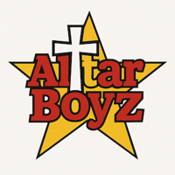
Overview
Synopsis
Altar Boyz follows the final concert of a fictional Christian boy band made up of five members: Matthew, Mark, Luke, Juan, and Abraham. Each character represents a distinct personality and musical archetype, from devout believer to comedic outsider, and together they deliver a high-energy performance filled with pop songs, choreography, and personal testimony. The conceit of the show is that the group is on their “Raise the Praise” farewell tour, aiming to save the souls of audience members with their infectious music and over-the-top charm.
As the concert unfolds, the Altar Boyz perform a series of numbers that parody both boy-band conventions and religious themes, while gradually revealing more about their own personal struggles and backstories. The combination of satire, heartfelt moments, and self-discovery brings depth to what begins as a playful parody. By the finale, the boys affirm their friendship, faith, and mission, leaving the audience with both laughs and a surprisingly touching message about acceptance and identity.
Show Information
Context
Altar Boyz premiered Off-Broadway at New World Stages in March 2005 and quickly became one of the longest-running Off-Broadway musicals of its era, with over 2,000 performances. Conceived as a satirical yet affectionate parody of late-1990s and early-2000s boy bands like NSYNC and the Backstreet Boys, the show cleverly pairs the glossy style of pop concerts with themes of faith, redemption, and camaraderie. Its creators—Gary Adler and Michael Patrick Walker (music and lyrics) and Kevin Del
to read the context for Altar Boyz and to unlock other amazing theatre resources!Plot
Characters
| Name | Part Size | Gender | Vocal Part |
|---|---|---|---|
|
Lead |
Male |
Tenor |
|
|
Lead |
Male |
Tenor |
|
|
Lead |
Male |
Baritone |
|
|
Lead |
Male |
Tenor, Baritone |
|
|
Lead |
Male |
Tenor, Baritone |
Songs
Act I
A song with an asterisk (*) before the title indicates a dance number.
Monologues
Scenes
Key Terms
A hybrid performance form that combines the energy and structure of a concert with the narrative, design, and staging elements of theatre. American Utopia exemplifies this style, blending live music with choreography and spoken reflection.
Parody is a comedic imitation of a style, genre, or work that exaggerates its features for humorous or satirical effect. In theatre, it playfully mocks conventions, characters, or cultural icons while still relying on audience recognition of the original. Parody can both celebrate and critique its subject, often blurring the line between homage and ridicule.
Satire is a dramatic style that uses humor, irony, and exaggeration to criticize human behavior, social institutions, or political systems. In theatre, it highlights flaws and hypocrisies through wit and parody, encouraging audiences to laugh while also reflecting on serious issues. Satire can range from lighthearted comedy to biting social commentary, making it both entertaining and thought-provoking.
Spectacle refers to the visual elements of a production that create wonder and excitement through design, movement, or scale. This might include elaborate costumes, dazzling choreography, special effects, or impressive sets. Spectacle often heightens the theatrical experience by leaving audiences with vivid visual impressions alongside the story and music.
Videos
Quizzes
Sorry! We do not currently have quizzes for this guide.
Themes, Symbols & Motifs
Themes
Faith and Identity – Beneath its satirical
to read about the themes, symbols and motifs from Altar Boyz and to unlock other amazing theatre resources!Quote Analysis
Sorry! We do not currently have learning modules for this guide.